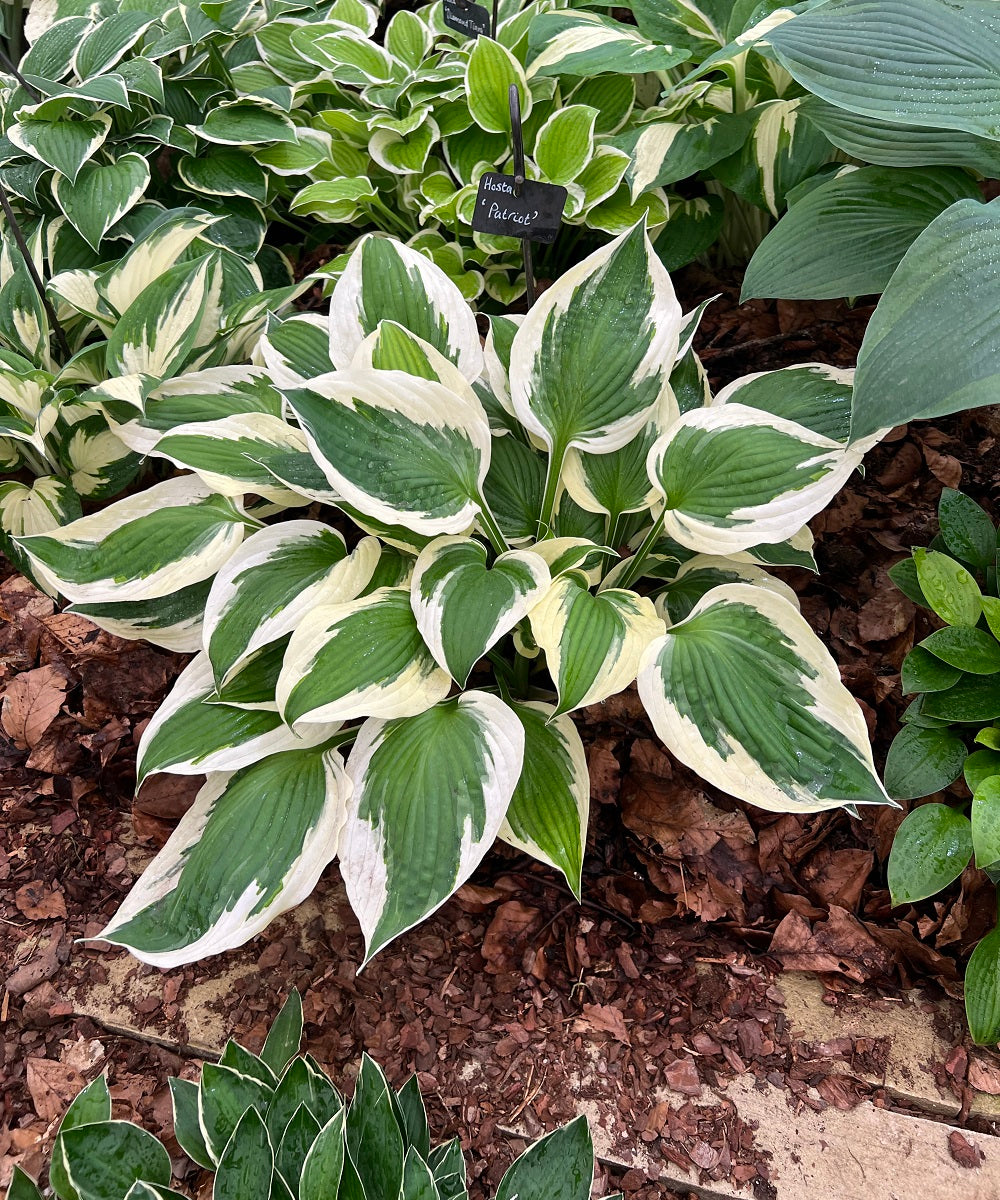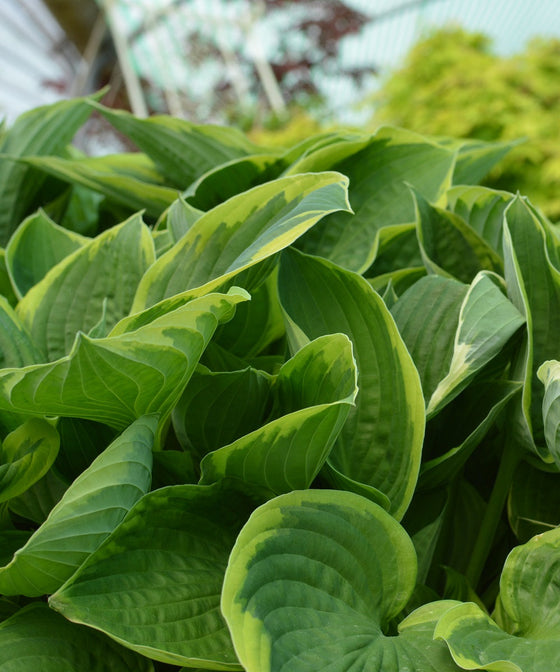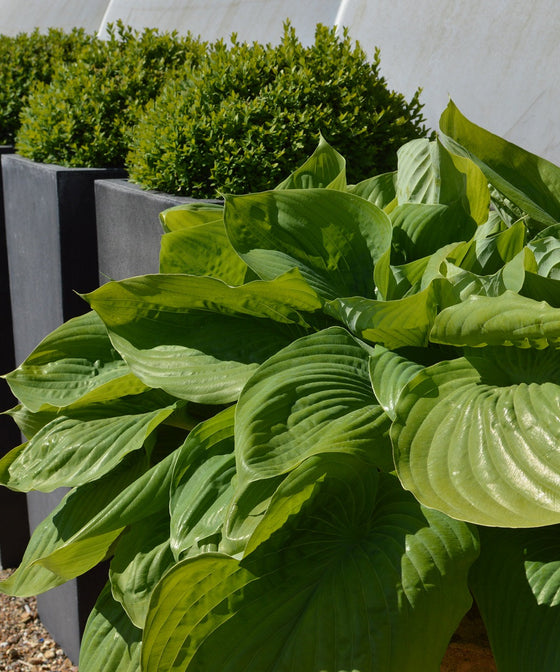
Hostas are beloved for their lush foliage, shade tolerance, and diverse range of shapes and colours. Among the many innovations in hosta cultivation, tetraploid hostas stand out for their unique characteristics and advantages. In this blog, we will delve into what makes tetraploid hostas special, explore some notable varieties, and provide tips for growing these resilient plants.
Tetraploid hostas are varieties that have four sets of chromosomes, unlike the more common diploid hostas with just two sets. This increased chromosome count leads to several beneficial traits, making tetraploid hostas particularly attractive to gardeners.
Thicker Leaves: Tetraploid hostas have thicker, more durable leaves compared to diploid varieties. This increased leaf thickness helps them better withstand pests like slugs and snails.
Vibrant Colours: The foliage of tetraploid hostas is often more intense in colour. These plants offer a spectrum of rich greens, blues, and variegated patterns that can enhance any garden space.
Enhanced Durability: Tetraploid hostas are typically more resilient to diseases and environmental stresses. They handle extreme temperatures and varying moisture levels more effectively than some traditional varieties.
Larger Size: Many tetraploid hostas are larger than their diploid counterparts, making them excellent choices for creating bold garden statements or filling larger spaces.
Improved Flowering: Tetraploid hostas often produce larger, more numerous flowers, adding a delightful visual and aromatic element to your garden.
Here are some noteworthy tetraploid hostas that showcase the variety and appeal of these plants:
Hosta 'Touch of Class': A truly fantastic hosta. Stunning thick blue margins with a streak of yellow green up the centre of the leaves. It will be more blue in deeper shade, more green and yellow in higher light levels. A must have!
Hosta 'Minuteman': Dark green leaves with striking and well defined white margins. Often mistaken for hosta Patriot, the differences are minuscule but both beautiful plants. Excellent in low light.
Hosta 'Paradise Glory': A lovely Paul's Glory sport. Large yellow leaves with a thick blue margin.
Hosta 'Anne': Beautiful round green leaves with a yellow gold margin. A spectacular variety at full maturity.
Hosta 'Justine': A stunning variety. It's bright yellow leaves are complimented by dark blue green margins. A lovely June Fever sport.


(Hosta 'Touch of Class', tetraploid sport of Hosta 'June')


(Hosta 'Minuteman', tetraploid sport of Hosta 'Francee')


(Hosta 'Paradise Glory', tetraploid sport of 'Paul's Glory')


(Hosta 'Anne', tetraploid sport of fortunei var. aureomarginata)


(Hosta 'Justine', tetraploid sport of Hosta 'June Fever')
Growing tetraploid hostas is generally straightforward, with some key considerations to ensure their success:
Location: Tetraploid hostas thrive in shaded or partially shaded locations. While some can tolerate more sun, excessive exposure can cause leaf burn. Choose a spot that offers protection from the harshest afternoon sun.
Soil: These hostas like rich, well-draining soil. Enhance your soil with organic matter like compost or aged manure to improve its structure and nutrient content. Aim for a slightly acidic to neutral pH (6.0-7.0) for the best results.
Watering: Keep the soil consistently moist, especially during dry periods. Deep watering helps maintain hydration, but avoid overwatering to prevent root rot.
Fertilisation: Apply a balanced, slow-release fertilizer in the spring and early summer to support vigorous growth. Organic options such as compost or well-rotted manure can also provide essential nutrients.
Pest Control: While tetraploid hostas are more resistant to pests, it’s still wise to monitor for slugs and snails. Use organic deterrents like garlic wash or copper tape to keep these pests at bay.
Mulching: A layer of mulch around the base of your hostas helps retain soil moisture, suppress weeds, and regulate soil temperature. Opt for organic mulches like wood chips or shredded leaves.
Tetraploid hostas bring unique benefits and beauty to the garden with their enhanced durability, vibrant colours, and impressive size. Whether you're enhancing a shaded corner or creating a striking garden display, these hostas offer a variety of options to suit your needs. By understanding their specific requirements and choosing the right varieties, you can enjoy a thriving and visually stunning garden for years to come.



